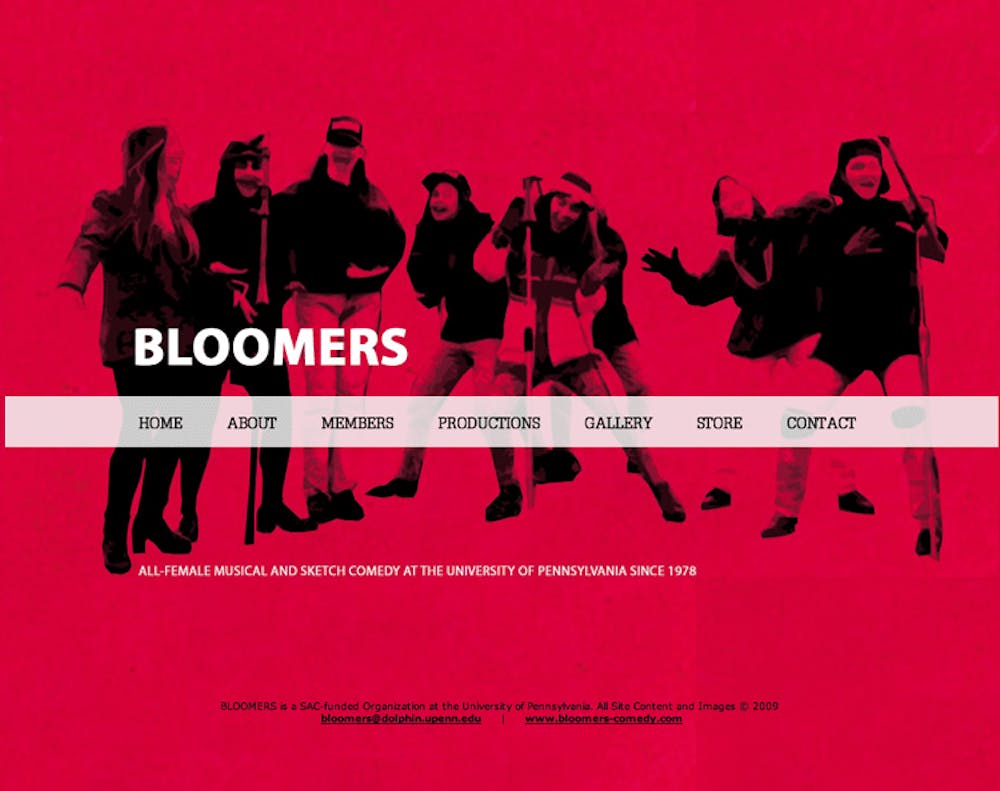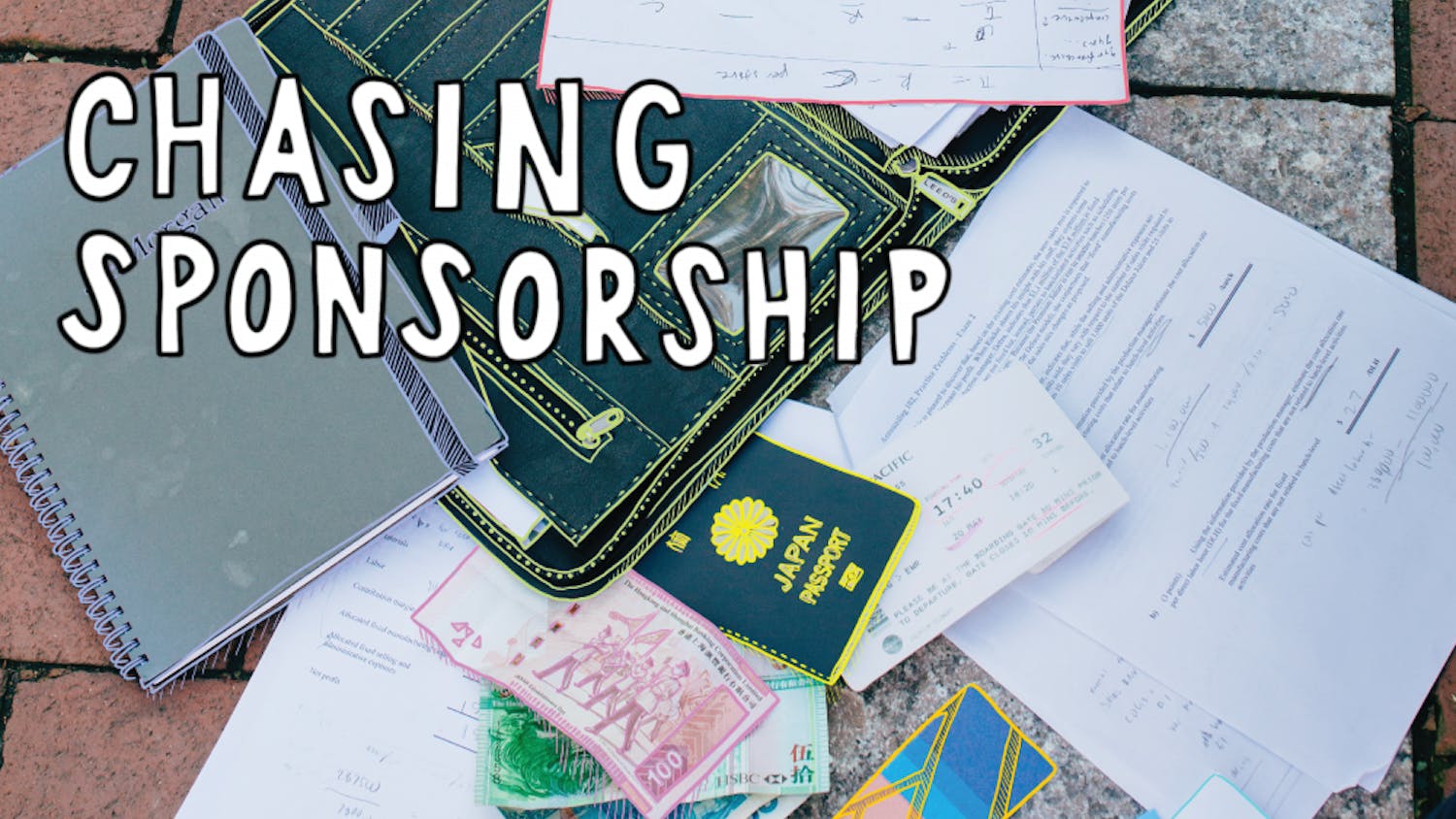As technological innovations shrink attention spans and birth outlets for distraction, it seems the best way to demand focus is by catching someone’s eye. 2010 saw the successful logo redesigns of Dell and iTunes, and in October, Gap received major criticism from the design world for its lackluster transformation of its iconic logo. Organizations big and small have begun recognizing that sometimes, looks do matter. Enter Penn Student Design, the small but determined graphic design agency composed entirely of Penn students.
“Designers shape culture, and graphic designers give form to the many types of visual communication (primarily words and pictures) we experience — from how political views are presented, the ways food is packaged and how companies are branded, to how scientific data is visualized or how the typography on an election ballot is structured,” explains David Comberg, a practicing designer and lecturer in the School of Design.
In 2009, Jason Chou, M&T alumni and current Microsoft employee, was perusing various Penn websites and found himself wholly unimpressed. “Princeton has their own Student Design Agency,” Jamie Shim, College senior and PSD president, explains. “Princeton’s agency might not be the strongest in terms of design, but it provides a unified service, which before PSD, we didn’t have. You just had to hope someone in your club was good at Photoshop.” Chou saw an opportunity to fill that void by establishing a hub for the already large community of freelance and unemployed graphic designers on Penn’s campus. Two years later, PSD is operating in full force, doing its best to become the first choice for design needs both on and off campus.
Graphic design refers to a wide range of fields and disciplines, which include visual arts, typography, page layout, web design and printmaking. Penn Student Design acts as an umbrella organization for both aspiring graphic designers and amateurs within these areas. The 15–person staff explores these different forms of design through the services they offer, like website creation and print design.
This year they are branching out and diversifying into photography and video editing. Comberg elaborates, “Graphic designers are trained to think about visual communications, make plans and execute designs that inform, persuade and, hopefully, make life better. So much of our experience is through design, and graphic designers should, therefore, make responsible forms: images that create the kind of visual culture in which we want to live.” Through this adaptability of expression, graphic designers can explore an enormous spectrum of ideas and thoughts in countless arenas and mediums.
By making these different services available to both students and the Philadelphia community at large at a comparable price to professional firms, PSD looks to provide a competitive service to organizations looking to publicize and expand. “The idea is to keep it really cheap with student groups, because they have very small budgets, but we want to help them out,” explains senior and PSD designer Francis Tseng.
Talking to Shim and Tseng at once is both intimidating and heartening; as seniors in college, they both comport themselves like full-fledged professionals. Tseng is soft–spoken and polite, while Shim, as president, takes every opportunity to represent her organization proudly while remaining modest. They consider their responses earnestly, each pausing to grant the other a moment to speak. Together, they could convince the most inept technology users to pursue a career in graphic design. Though there seems to be a wide range of styles offered by PSD designers, every product in the PSD portfolio is visually clean and refreshingly original in content. Examples of print designs, like the flyer for the Penn Taiwanese Bubble Tea Social, feature eye–poppingly bright colors, bold block letters and clean graphics, like an irresistible cartoon advertisement. Similarly, their website designs are uncluttered and minimalist while maintaining creativity. For instance, the new page for Penn UTV, the University TV station, a website that is low in content, allows images and colors to do the talking as the main focal point of the page.
To date, PSD’s modest client base is mostly composed of student groups — like The Walk Magazine, Bloomers and the Philomethean society, all of whom have had their websites redesigned by PSD — and off-campus entrepreneurs and MBAs looking to publicize burgeoning startups and events. “Having badly designed advertisements really does turn people off,” Tseng remarks. Tseng explains that PSD is still working on marketing, beginning with price staggering for student groups versus nonstudent groups in order to tackle the budget needs of these organizations.
Additionally, because they offer an option of web hosting, PSD hopes to provide an alternative to the outdated, almost defunct “Dolphin” server, which hosts the majority of the University affiliated websites. “The Dolphin server is really not that great and may very well shut down soon. We don’t necessarily want to replace it, but we definitely want to provide an good, affordable alternative,” said Shim.
When a group makes a request of PSD, Shim tries to respond within 24–hours with a quote. If they accept, the client is paired with a designer based on experience and the artist’s portfolio. They communicate via email or in person about what look and feel the group is trying to achieve. After the design is drafted and redrafted according to clients’ wishes, the art director, Yiyi Zhou, gives the project final approval.
Tseng explains that in the future he hopes to have all meetings take place in person in order to prevent a miscommunication when describing visual aspects over email, which is currently (and understandably) quite common. This process affords designers a lot of freedom in terms of commitment: each designer can work on as many or as few projects at a time as he or she wishes. According to Shim, most PSD designers are not necessarily aspiring towards a professional career in graphic design. If you were to stand outside of Huntsman or the Writers House and watch the ebb and flow of Americas future CEOs and Pulitzer winners, many of them have been dabbling in design for years. “I think a lot of people have the skills, but none of them know each other because there’s not a real way to meet,” observes Tseng; he has been designing since he was young, using his father’s Photoshop to run a few websites. Shim has been freelancing since high school.
Here lies another benefit of PSD membership. Just recently, PSD was absorbed by Penn Student Agencies, the university affiliate that provides students with on–campus work experience. Tseng, while working at PSA and designing for PSD on the side, was struck by the unique opportunity that the union between the two agencies affords, especially given PSA’s already established printing services.
Because it’s so hard to find work as a freelancer, it’s incredibly desirable to become part of a program with an established administration and marketing plan that one can utilize to attract clientele. In joining forces with an established and respected organization, PSD designers receive a form of protection and security that isn’t granted to freelance designers.
“It’s really dangerous working freelance,” Shim explains from personal experience. “When you’re working on your own, there’s no safety net to guarantee a client is going to pay you.” PSA affiliation helps to ensure payment by making clients accountable to a larger organization. “We provide a service, not just a product. How do you know if you’re being fairly charged? We don’t keep track of hours spent on a project or number of revisions,” Shim furthers. Plus, in dealing with the clients on a personal basis, the designers get the professional experience and skills that are necessary, not just as graphic designers, but in nearly every profession that depends on a relationship with a client.
“Speaking to the clients helps you learn how to represent yourself and your ideas while learning how to establish a healthy relationship between employee and employer,” Shim elaborated. Though the differences between an accountant and a graphic designer may be stark, these two fields both value the importance of that relationship, and therefore the diverse aspirations of PSD designers all have a lot to gain from practicing these communications skills.
As more professions come to rely more heavily on developing technologies, the experience gained from mastering graphic design is an invaluable career asset. According to Comberg, the skills of a designer lend themselves effortless to every facet of society. “Designers, because of their ability to work collaboratively on a broad range of projects, are also valuable when designing larger strategic problems, like a better system for how patients can complete medical records, designing more readable typefaces for highway signage or developing tax forms that are easier to use.”
Because PSD recognizes the importance of learning the basic skills and assets required in designing, they have developed an important educational aspect of the Penn Student Design program. PSD hosts educational seminars in order to help further cultivate the skills that designers aren’t as advanced in. Shim explains that PSD hopes to become a center for education about the many aspects of both aesthetic design and computer programming. These skills are extremely coveted by a diverse group of students, and in return, PSD is very much looking to expand. Shim explains that these developmental seminars are also helpful in attracting potential new designers and computer coders — a key prerequisite in attracting a larger client base.
Though Penn Student Design’s founding was inspired by the uniformity of Princeton’s design firm (they have their own Princeton font), PSD thrives on the diversity of Penn’s campus. “PSD doesn’t really have a signature ‘look’ or ‘design’ because the needs and looks of Penn’s groups are so different.” The beauty of PSD lies in its ability to adapt to the contrasting expressions of all the different Penn groups. And with each different designer comes a different aesthetic appeal and technique.







